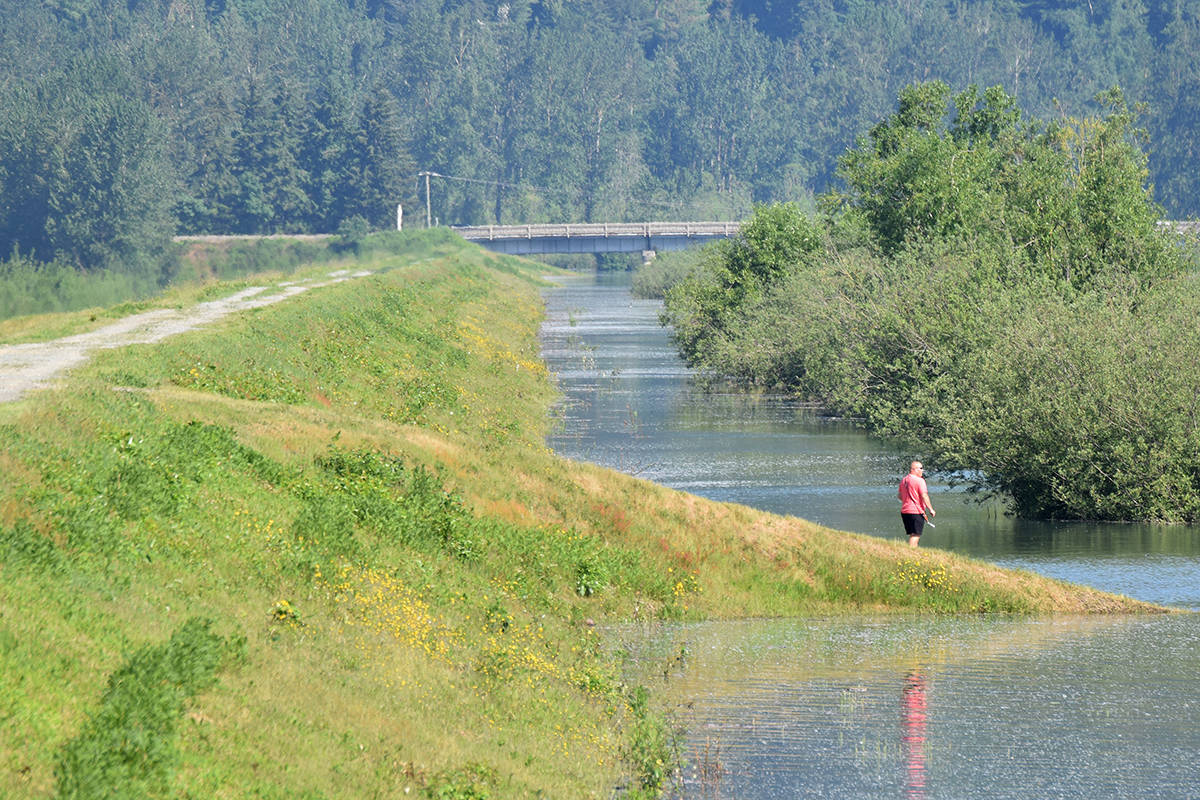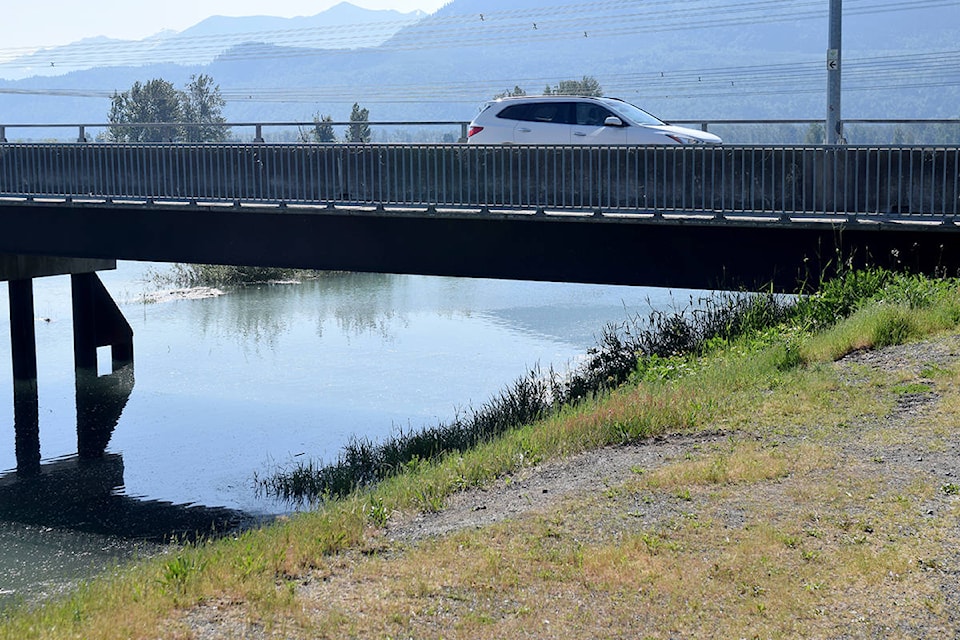This is the final instalment in a three-part series on the flood dangers posed to the Fraser Valley. Part one catalogued the three very different ways Abbotsford could experience a devastating flood. Part two looked at the 1948 flood that crippled the region. This is part three.
The Fraser Valley’s insufficient flood defences are the result of a decades-long lack of urgency and provincial leadership, flood experts and politicians say.
Across the Lower Mainland, many dikes and other flood protections are expected to fail if waters again rise to levels last seen in 1894. The odds of such a devastating flood – pegged at around two per cent in any one decade – are expected to rise throughout the next century as the climate changes. Earthquakes and, in Abbotsford, the Nooksack River in Washington State also pose a risk.
But despite a stream of reports testifying to the economic and human devastation that a major inundation could bring, improvements to flood protection infrastructure have been plagued by underfunding and a lack of co-ordination.
In Abbotsford alone, upgrading dikes to levels that would withstand an 1894 flood and/or a major earthquake is expected to cost around $420 million. At a recent council meeting, Coun. Dave Loewen called for the provincial and federal governments to pay up. Loewen said he was at a panel in which BC Liberal Attorney General Susan Anton said the provincial budget couldn’t bear the cost of paying for all the dike upgrades that are needed.
“I was dumbfounded by that response,” Loewen said. In 2007, when the Vedder and Matsqui dikes were last raised, Loewen said the city shouldered more than half the cost of a $12 million dike project. And when the city tried to tackle erosion along its dike in 2014, the province only coughed up around one-tenth of the $2.7 million cost of the project.
Abbotsford Mayor Henry Braun has repeatedly said that cities don’t have the revenue base to help pay for major infrastructure that were once the domain of senior governments. He noted that flood infrastructure used to be funded by the province and federal governments, but that changed in the mid-2000s.
“We seem to have to have a catastrophe and all of a sudden there are billions of dollars available,” he said. “Why does it take that?”
• • • • •
While we now know that many of the region’s dikes are too low, the structures were actually designed to protect from a 1894-scale flood. But engineers didn’t account for the fact that there were no dikes when water roared through the valley in 1894. If we want dikes to contain that same huge volume of water to the general river area, its height is going to be significantly higher than 114 years ago. Computer modelling aided by improved technology in the early 2000s only confirmed the need for higher dikes.
But raising the dikes isn’t simply a matter of piling more material on the top. To ensure they are stable, many will “have to be built from the bottom up,” according to the province’s former head of flood safety, Neil Peters.
So that’s the problem, but in recent decades, British Columbia has taken a scatter-shot approach to upgrading dikes.
There has historically been too little money for too many projects, so cash was doled out on an ad hoc basis – with no overriding strategy – when municipalities offered to pick up a share of the bill, Peters said. One round of well-publicized funding by the BC Liberal government saw $150 million doled out. But while some of that money was well-spent, other projects would do little to forestall an actual flood, Peters said. One section of dike might get raised, he said, only to be compromised by adjacent, lower sections.
With the province mostly absent, municipalities like Surrey and Richmond have taken it upon themselves to plan and fund major upgrades. But not all municipalities have the financial clout as those two cities with a combined population of about 750,000.
Flood protection isn’t just about diking riverbanks. It can include things like reservoirs, spillways, dams and containment areas. Dikes raised in one area can raise or lower the flood risk in another. It’s a complex issue that requires a regional approach, according to Kees Lokman, a professor at the University of British Columbia. It also will require some broader funding strategy. But such a plan would be new.
“When we’re looking at money, the provincial government has basically decoupled flood management from their portfolio,” Lokman said.
Peters agreed: “We don’t have the money or political will at this point to go about improving the dikes in a major way.”
• • • • •
Over the last decade, the most prominent leadership on the flood-protection issue has come from the Fraser Basin Council (FBC), a non-profit that has completed several extensive studies on the flood risk and existing protections. The FBC receives funding from the province and various municipalities and is developing recommendations to tackle the serious issues it has raised in its reports thus far.
But the FBC can only do so much.
The strategy it is developing will be “complementary to different local initiatives,” explained Steve Litke, FBC’s senior program manager,. The aim is to give stakeholders tools they can use to make decisions.
Litke is optimistic, saying, “we’re certainly seeing signals that this is very important to all levels of government.” He noted that both the federal and provincial levels of governments have helped fund the strategy. And he said the reports are important in order to make the business case that doing nothing will cost more than actually investing in flood prevention.
Lokman and Peters both spoke highly of the work done by the Fraser Basin Council. But they also each independently noted that the FBC can’t actually get anything concrete done.
“They don’t have a political mandate to actually do things and spend the money,” Peters said. “A strategy is a report on a shelf and ideas in people’s minds, but it’s not going to stop the flood.”
Only governments can do that.
On the funding front, the federal government’s promise to contribute up to 50 per cent of the money for infrastructure programs suggests there has been some acknowledgment that municipalities can’t – or won’t – pay for major regional projects.
Asked what the province is doing on the flood protection front, Emergency Management BC pointed to the development of a new provincial flood risk strategy and recent reports considering last year’s flood and fire season and the impact of climate change on disasters.
EMBC pointed to several ongoing initiatives, including $14.2 million worth of dike upgrades and assessments in Abbotsford and $13.1 million worth of flood protection funding announced this spring. Of that $13.1 million, though, most will go towards plans and further studies of the issues.
At the same time, the province also said that it’s looking at co-ordination issues and improving “efficiencies in prioritizing structural mitigation funding for flood protection.”
Braun, for his part, suggested the time for studies is coming to an end.
“They have studied this river to death. We know what has to happen,” he said. “People have to start making decisions, and those people are the politicians.”
@ty_olsen
tolsen@abbynews.com
Like us on Facebook and follow us on Twitter.
Related

